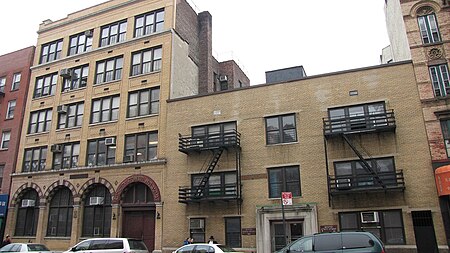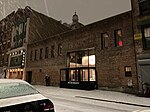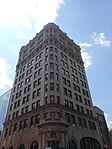Mesivtha Tifereth Jerusalem
1907 establishments in New York CityBoys' schools in New York (state)Education in ManhattanEducational institutions established in 1907Mesivtas ... and 2 more
Moshe FeinsteinOrthodox yeshivas in New York City

Mesivtha Tifereth Jerusalem (Hebrew: מתיבתא תפארת ירושלים, Mesivta Tiferet Yerushaláyim) (MTJ) is a yeshiva in New York City, and one of the oldest existent yeshivas in the city. It is the institution formerly led by Rabbi Moshe Feinstein, and then led by his son Rabbi Dovid Feinstein until his passing in November 2020. MTJ is now led by Rabbi Berel Feinstein.
Excerpt from the Wikipedia article Mesivtha Tifereth Jerusalem (License: CC BY-SA 3.0, Authors, Images).Mesivtha Tifereth Jerusalem
East Broadway, New York Manhattan
Geographical coordinates (GPS) Address Nearby Places Show on map
Geographical coordinates (GPS)
| Latitude | Longitude |
|---|---|
| N 40.713833333333 ° | E -73.991166666667 ° |
Address
East Broadway 145
10002 New York, Manhattan
New York, United States
Open on Google Maps







